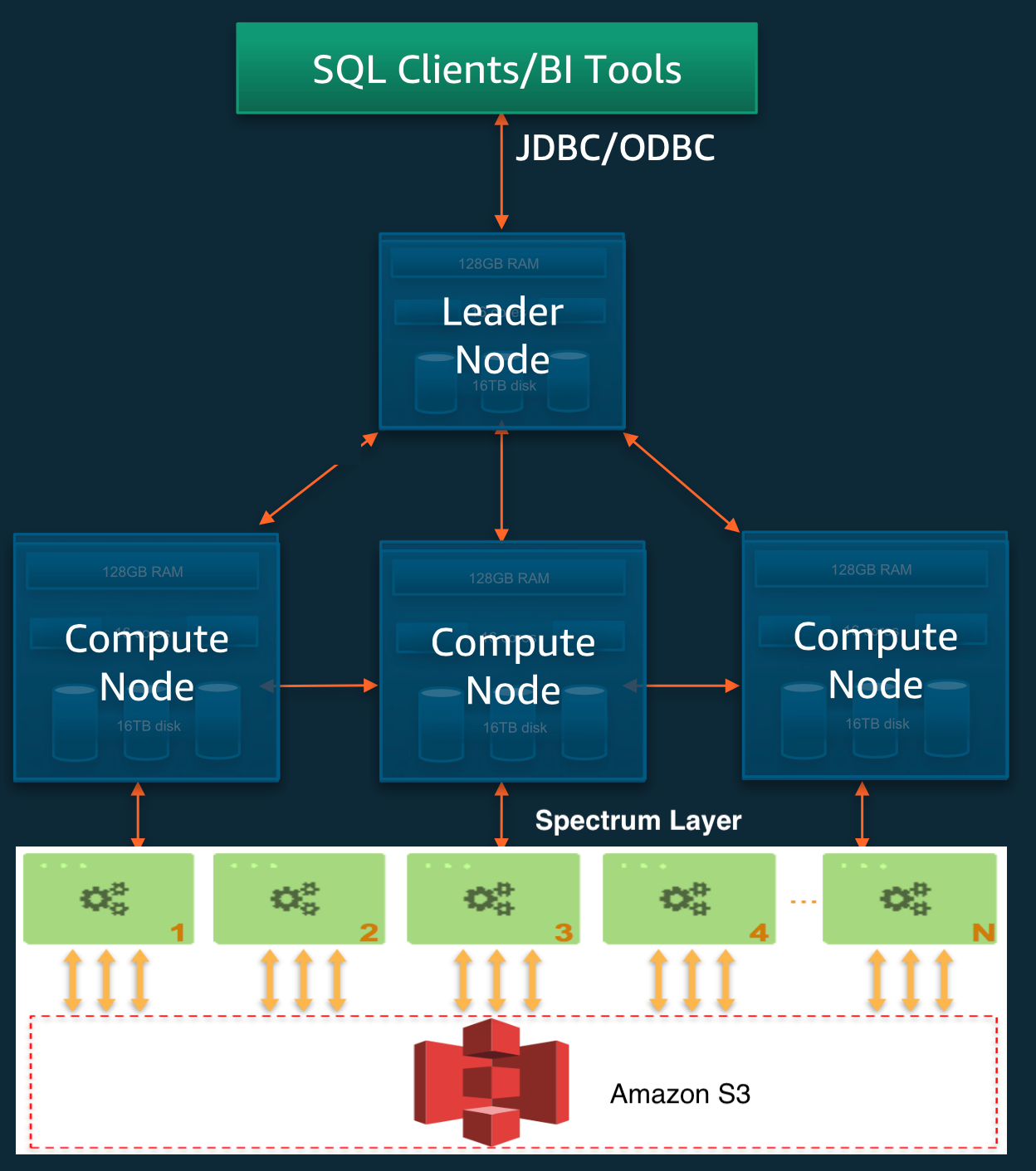

- Aws redshift spectrum how to#
- Aws redshift spectrum full#
- Aws redshift spectrum code#
- Aws redshift spectrum download#
LOCATION 's3://test-12343210/' So, which should you choose: Spectrum or Athena? The script below creates a database on Athena if it doesn't exist already:ĬREATE EXTERNAL TABLE ext_data_suppliers. This is a good resource for details about the different options for your needs. Glue Data Catalog is a better option if you want to have fluid integration with additional data sources without starting extra services. Just remember that other options are available, such as the Hive metastore. Okay, so far, so good! Let's move on to creating the tables.įirst, you need to create the database where the tables will be stored.įor this tutorial, we'll count on AWS Glue Data Catalog for this job. You'll also need your AWS bucket set up with your data configured and the required permissions to access it.

We'll also assume that you have your Redshift cluster ready with the necessary IAM roles attached to it (when using Redshift Spectrum).
Aws redshift spectrum download#
We'll use a sample CSV dataset for our tutorial, which you can download here. Now that you have an overall idea of each product, it's time to get your hands dirty and create some tables! S3 also allows "delete protection" and " v ersion control" of your objects, making your data safer and easier to track back to its original source. It's the best option to store your semi-structured data, such as server logs from your applications. Amazon S3Īmazon S3 is the managed object storage option that Amazon offers. You can then create and run your workbooks without any cluster configuration.Īthena makes it possible to achieve more with less, and it's cheaper to explore your data with less management than Redshift Spectrum. AthenaĪthena makes it easier to create shareable SQL queries among your teams-unlike Spectrum, which needs Redshift.

The also opens up the possibility of querying data stored directly on Amazon S3. So when you're querying your data, you get only the needed columns from your data instead of returning unnecessary fields and rows.
Aws redshift spectrum full#
Also, it's possible to consult existing tables from your Redshift cluster, which means that instead of querying the full table all the time, you can select the required columns for your report using SQL. Your team can narrow its search by querying only the necessary columns for your analysis. Spectrum is a Redshift component that allows you to query files stored in Amazon S3. While Amazon's data products aren't quite as extensive as its famous ecommerce shop, there's still a lot going on. How do Spectrum, Athena & S3 fit together? Below, you'll find the necessary steps to create a table on the AWS Glue catalog and use it to access your data in Amazon S3.
Aws redshift spectrum how to#
This article will show you how to explore your data on Amazon S3 using Athena and Redshift Spectrum.

Aws redshift spectrum code#
There's no need for complex Python code if you don't want to use it on initial data profiling tasks. That's where Spectrum and Athena shine. They let you use SQL to analyze data without changing it from the source. Exploding complex structures, such as JSON files, into a tabular format, can consume most of your time when you're exploring new data. Some cases could be more fluid in this integration, such as when your data has nested values. Your source data often comes from files with unknown formats of data, which makes an analyst's job a nightmare. But when it comes to exploring your data, things might not be that simple. Major public cloud providers, such as Amazon or Google, offer robust products that are ready for your analytics needs. One of the significant challenges to data-driven companies comes when integrating different application systems.


 0 kommentar(er)
0 kommentar(er)
